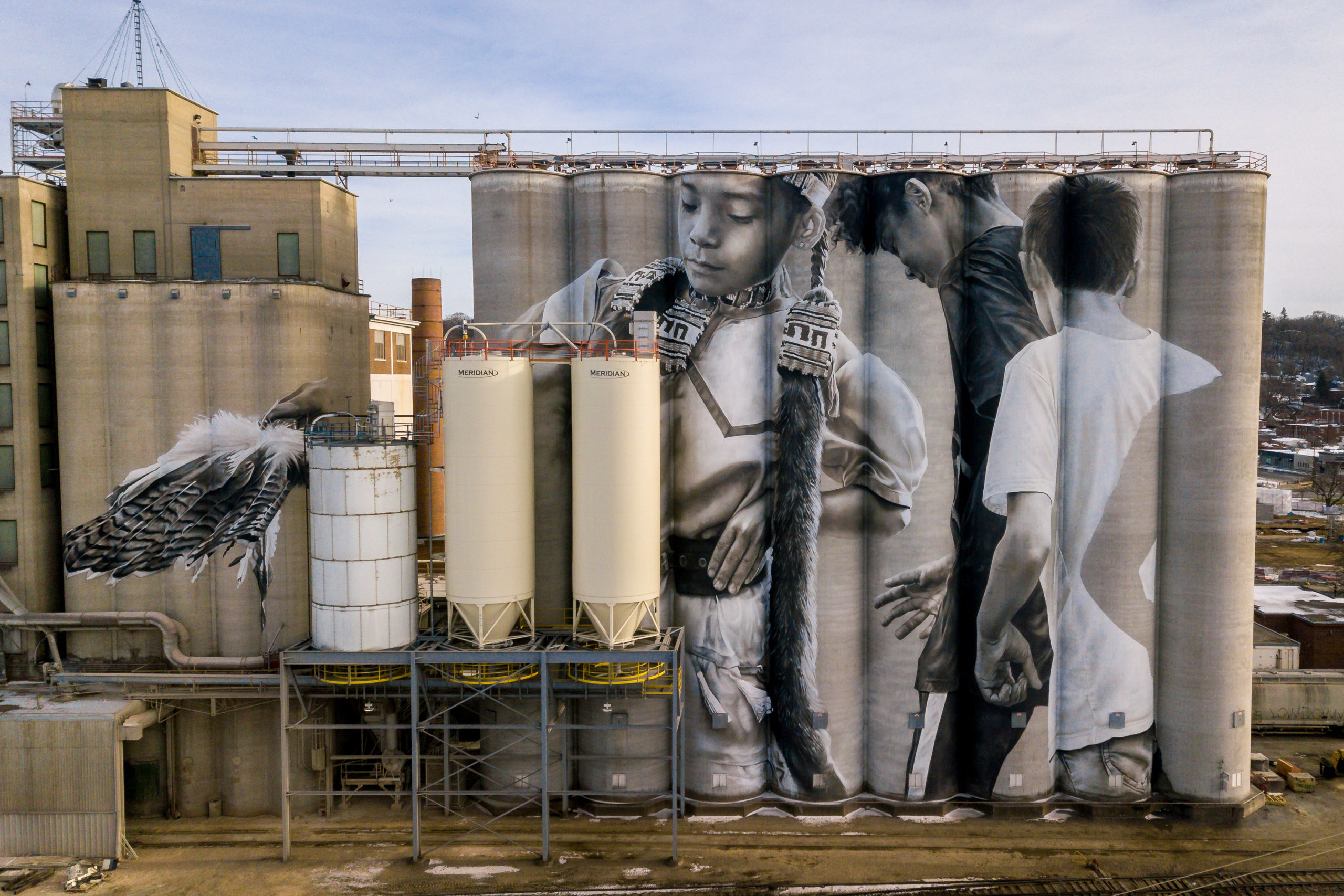I have changed my column title after 20 years of its being Not Eudora……Now its Not your usual Republican

Indian Givers
I needed a break from tilting at windmills so I set my sights on the diaspora of Minnesota’s Dakota Indians. My better half has been reading about the consequences of the “Sioux Uprising” with Presbyterian women across the Synod of Lakes and Prairies. Traveling to the Minnesota River Valley was her idea. It’s a trek taken annually by the Dakota on horseback to Mankato the city where we were married 48 years ago on the anniversary (unbeknownst to us) of the start of the uprising – August 17th.
I left Kansas, another state mostly stripped of its Indians, at twelve to start Junior High in Minnesota. My first memory of Mankato was crossing the Main Street Bridge to North Mankato and seeing a granite monument poised over the river proclaiming: “Here were hung 38 Sioux Indians.” An angry eurocentric citizenry hung them the day after Christmas in the second year of the Civil War. This was halfway through the larger war which my “Bleeding Kansas” helped provoke.
I don’t ever recall hearing about the uprising in Minnesota classrooms. Ignorance is bliss. Perhaps it had been taught in elementary school. I learned my Kansas History in fifth grade.
The modest sized Minnesota meanders in a huge trough carved by the melting waters of mile-high glaciers twelve thousand years ago. Today when heavy rains fall on deep snow late into spring the river can fill the ancient river bed. The Minnesota flooded North Mankato in 1950 when I was born. It attempted a repeat performance in 1965. That year North Mankato Junior High was dismissed so that the boys could help sandbag the river and save the school. The girls made us sandwiches. Our levees held.
Claudia and I began following the river from its source at Bigstone Lake. Between Bigstone and its northern neighbor, Lake Traverse, runs one of Minnesota’s continental divides. Waters from Lake Traverse flow through the Red River of the North and empty into Hudson Bay. The contents of the Minnesota River flow past New Orleans.
Bigstone was an apt name. Stones tower over a lush marsh which helps explain why the Sioux clung to the river valley until their six week war justified a final theft of their land save for two postage stamps.
As we zigzagged across the green valley I read the book 38 Nooses by Scott W. Berg to my chauffeur. Ten years ago it was a Kirkus “best book of the year.” We drove through tidy river towns to the principle sites of the conflict.
Past Montevideo we stopped at a replica of the Presbyterian Mission where missionaries gave Dakota a written alphabet so that the Dakota could have a Bible in their own tongue. After Granite Falls we visited the first postage stamp the Upper Sioux Agency. We had lunch at its Casino.
At Redwood Falls we visited the other stamp, the Lower Sioux Reservation. Nearby we walked Birch Coulee a battle that caught Federal troops flatfooted and Fort Ridgely which resisted attacks. Ridgely’s foundations were dug up and cemented together by the Works Progress Administration during the Depression. Today the outlines of its barracks and out-buildings are spread out in a state park on the edge of the valley. Somewhere we passed a stone noting Indian agent Andrew Myrick. He is said to have told hungry Indians to eat grass. His corpse was found later with his mouth stuffed full of it.
Dakota anger led to the desolation of the German settlement, Milford, west of the larger New Ulm which was only half burned to the ground. Bit by bit we learned of the treaties drafted by men who traded with and intermarried with the Dakota. Trusted like family such men as Henry Sibley, Minnesota’s first governor, negotiated treaties that sent the Dakota’s annual gold payments to traders not the Dakota in violation of federal law. Many, like the doomed Myrick, lived in ostentatious frontier mansions. German settlers had no idea of the coming maelstrom. To the Dakota settlers were like locusts. In the ten years following the 1851 treaty whites in Minnesota outnumbered Indians five to one. They moved into Indian summer dwellings and took over Indian gardens. As far as German settlers were concerned they were building America even though non-German speaking Americans often resented them.
Years after the city’s burning German-Americans everywhere pitched in to build a shrine to their German forbears in New Ulm. A statue of “Herman the German,” a warrior who defeated Roman armies, was raised above the Minnesota River Valley with a commanding view. However, when another round of paranoia against Germans blew up during World War I, the associations that raised the monument disappeared. New Ulm took over its maintenance.
My wife’s lodestar was the short memoir written by settler, Sarah Wakefield, Six weeks in the Sioux teepees. Sarah met and befriended Dakota as a new frontier wife in Shakopee where the Minnesota inches closer to the Mississippi. She learned their language and when she was captured her friend Chaska sheltered Sarah and her children. Chaska would be one of the innocents hung in Mankato. Wakefield’s book was a rebuke to this injustice. The memoir is the kind of history too many Republicans would prefer we didn’t teach. If they studied history they might learn something about their own party.
Though preoccupied with the Civil War and plans for his Emancipation Proclamation Abraham Lincoln took time to personally review the allegations against all 300 Dakota sentenced to die. Defying calls for revenge he whittled the list down to 38. No wonder Lincoln’s name is all but lost in Republican circles today. They should follow the Dakota’s example and travel to Mankato. There they would find a park dedicated to “Reconciliation.”
Welty runs his mouth off at: www.lincolndemocrat.com
